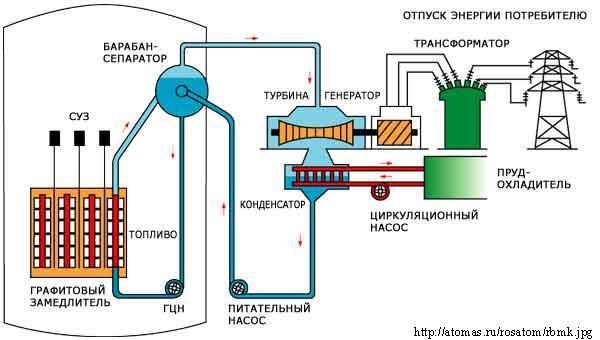
Each nuclear reactor is provided with a (power based) emergency protection system, the only purpose of which is suppression of an accident process of the above type during its very first phase. As soon as power exceeds significantly the set value (by more than 30%), or when power growth rate becomes high (higher than 7% /sec), this system issues an EPS signal, pursuant to which absorbing rods are lowered into the reactor, and it is damped.
The system is fully self-contained, and features maximum reliability thanks to multiple redundancy and logical protection against false alarms; it includes neutron flow sensors and outputs discrete signal of power-based ([AZM]) type or/and power growth rate based ([AZSR]) type into the logical control circuit of rod travel. No man of sound mind would ever dream of turning off or suppressing this system while the reactor is in operation. Moreover, it would be impossible without hacking.
On the other hand, as regards a power generating reactor belonging to an NPP generating unit, there are a lot of other different reasons, apart from nuclear safety, that may require stopping the reactor urgently in order not to burn or break down something due to excessive power. Therefore, largely speaking, an emergency protection is understood as a certain logical electronic scheme, which may for convenience be represented as an electric circuit with multiple series contacts.
All these contacts are normally closed, but when at least one of them is opened, the whole circuit will be broken, and, consequently, the general EPS-5 signal will be output pursuant to which all the absorbing rods will start moving down the reactor at their maximum speed. The [AZM] and [AZSR] signals are a kind of disconnecting signals for respective contacts; there is also a contact which is opened by the EPS-5 button from the operatorís console. Similarly, other contacts are opened by other emergency protection signals of the main process equipment of the power generating unit (in fact, this is protection from the reactor rather than protection of it).
It was these signals that the operating staff was manipulating with, either suppressing them or changing their settings while trying to stabilize the operating mode. According to A.S.Dyatlov, it was done in full compliance with the operation regulations.
to sitemap |


